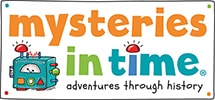Exploring Different Methods and Resources for Homeschool History Education
Homeschooling can be a great way to tailor your child’s education to their individual needs and interests.
One of the subjects that can be challenging to teach at home is history. Without the structure of a pre-made curriculum, it can be difficult to know where to start or what resources to use. However, there are several ways to teach history without using a curriculum that can make the subject interesting and relevant to your students.
1. Primary Source Materials
One of the best ways to teach history is through primary source materials. These are original documents, artifacts and other materials that were created during the time period being studied. For example, letters written by soldiers during a war can give students a first-hand look at the experiences and emotions of those who were there. Similarly, speeches given by historical figures can provide insight into their perspective and message. By using primary source materials, students can see history from a personal perspective, rather than just reading about it in a textbook.
2. Field Trips
Another effective way to teach history is through field trips. Visiting a historical site or museum can make history come alive for students. For example, visiting a historical battlefield can give students a sense of what it was like to be there, or visiting a museum can allow students to see and learn about artifacts from the past. Field trips can also be a great way to supplement a study of history, giving students a chance to see historical events and places in person.
3. Historical Fiction and Non-Fiction Books
Historical fiction and non-fiction books can also be used to supplement the study of history. For example, students can read a historical fiction book set during the past to understand the daily life and struggles of people during that time. Or students can read a non-fiction book about a historical event or person to gain a deeper understanding of that topic. Reading historical fiction can be a great way to make history come alive for students and to help them understand the events and people they are studying.
4. Incorporating Media
Incorporating a variety of media, such as videos, podcasts, and documentaries can also be a great way to supplement the study of history. For example, students can watch a video about the construction of the pyramids in Egypt to understand how they were built, or listen to a podcast about the life of Martin Luther King Jr. to understand his impact on civil rights. This can make history more engaging for students, and it can also provide a different perspective on the topic being studied.
5. Role-playing
Role-playing and simulations can also be used to help students understand historical events. By using role-play, students can be helped to understand the social and cultural context of that event, and are a great way to help students understand historical events in a hands-on way.
6. Independent Research
Finally, encouraging students to conduct their own research and present their findings on a particular historical event or person can help them to develop critical thinking and research skills. For example, students can choose a historical event or person that interests them and research it in depth, creating a presentation or report to share with the group. This can give students a sense of ownership over their learning, and it can also make history more interesting and relevant to them.
7. History Subscription Boxes
In addition to these methods, there are also history subscription boxes available that can be used to supplement homeschool history lessons. These boxes typically include a variety of materials such as primary source documents, artifacts, maps, games, and activities that are related to a specific historical period or theme. Examples of history subscription boxes include “Mysteries in Time“. These boxes can be a great resource for homeschooling parents, as they incorporate fiction and non-fiction in an age-appropriate way that makes learning about history fun.
Summary: Teaching Homeschool History without a Curriculum
In summary, teaching homeschool history without a curriculum can be done by using a variety of methods such as primary sources, field trips, historical fiction, a variety of media, role-playing and simulations, and encouraging students to conduct their own research. Each of these methods can be tailored to the student’s interests, learning style and level, and make history come alive.


